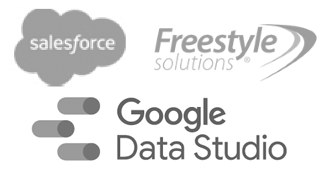
Moneyball — made famous by author Michael Lewis, is of course the well-known baseball metric documented in both a book and movie.
R-F-M Analysis — a legendary direct marketing metric, goes back to the 1980s, but is not nearly as well known today.
These analytics may be more alike than not. Allow me to explain.
R-F-M Basics
R-F-M Analysis has been used by direct marketers for decades, to identify customers most likely to respond to their next promotion.
R: Recency is the metric of “what have you done for me lately.” The more recent a purchase, the higher the customer recency score.
M: Monetary Value identifies a “big spender.” Aggregate lifetime spending is summed up to score this metric. Of course, higher is better, yielding a higher score.
F: Frequency identifies a “repeat customer.” The higher the purchase frequency, the higher the score.
Knowing the value of these three independent variables, marketers can use predictive modeling to find the “sweet spot” of their customer base. The sweet spot is the segment that is “active” (R), “loyal” (F), and “profitable enough” (M) to deserve your next direct mail piece. For catalog marketers in particular, scoring each customer with an R-F-M score is critical to selecting customers for a mail campaign.
R-F-M vs Moneyball
Visualize major league baseball teams in the off-season, selecting from a pool of free agents to enlist for the upcoming season. Much like marketing directors, each general manager looks for players with the highest yield, for the least expense. In 2019, presumably using the Moneyball approach, the Philadelphia Phillies selected free agent Bryce Harper, a former league MVP, for his expected contribution to the team. Harper’s contract: $330 million over 13 years.
Phillies fans: buckle up. The early verdict in baseball circles on the Harper selection is a potential bust. Perhaps instead of Moneyball, the Phillies should have predicted Harper’s value using a version of our R-F-M scoring:
R: Harper’s Recency score at the time of his signing would have been low (his MVP award was back in 2015).
F: His 169 strikeouts (a reverse proxy for Frequency) in 2018 was 55% higher than previous seasons. A predictor of doom ahead.
M: Stretching this discussion a bit, his record-setting $330 million contract could also be considered a reverse proxy for Monetary Value — again a bad thing.
Takeaway
Catalog marketers with more than 50,000 annual mailings should establish a predictive modeling approach. R-F-M is a tried and true metric that requires only a basic understanding of algebra. Over-mailing your customer base could cost you thousands of dollars in needless mailings. Undershooting your base may rob you of potential sales. We suggest a short phone call to our offices to see if R-F-M fits your marketing initiatives.
Bruce Gregoire is founder and CEO of WiseGuys Marketing, in Falls Church, VA. Since 1998, WiseGuys has helped direct marketers target their customers with the right offer at the right time — using R-F-M algorithms and data-driven CRM software.









